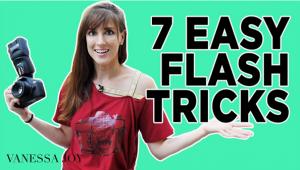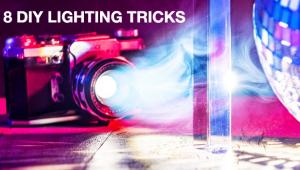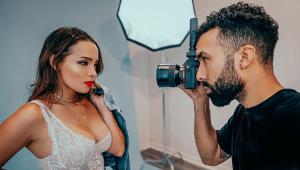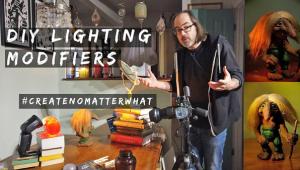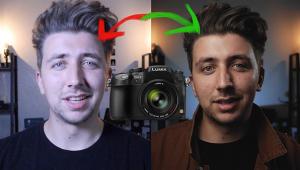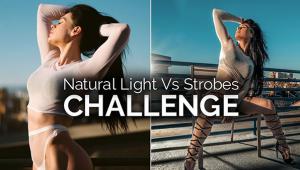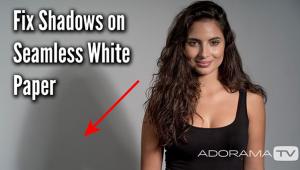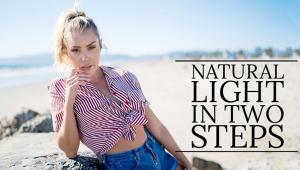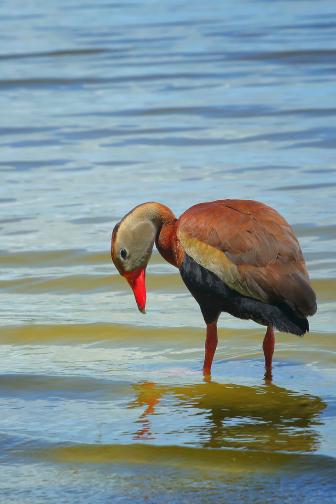In a Flash: How Photographer Adam Savitch Gets Maximum Impact From Minimal Lighting
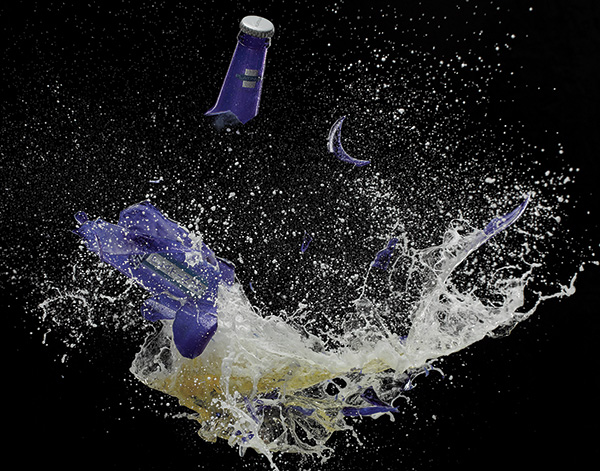
Adam Savitch’s assistant fired a BB gun at the bottle. The sound triggered the strobe via a remote triggering device. Lighting consisted of a diffused Broncolor head with a P70 reflector from above. “You lay a lot of plastic on the floor to catch the liquid.” The backdrop is black velour.
All Photos © Adam Savitch
Dividing his time between his New York City and Paris studios, photographer Adam Savitch specializes in still life and motion studies for advertising and editorial clients, often with an avant-garde mindset. When it comes to lighting, Savitch believes in the old adage “less is more.” He doesn’t throw a light at every nook and cranny of his tabletop sets. Instead he mostly employs only one light and finesses its effect on the subject.

This shot is a composite of long and short exposures involving a pair of rotating bowls (one inside the other), positioned slightly off-center, on a revolving platform. The wash of white light comes from a tiny battery-powered LED positioned inside the bowls. There was a red gel in front of the key light source, which was positioned behind the bowls, adding the red streaks. Each element, including the cream at the top of the jar, had to be photographed individually. The jar was lit with one diffused flash head and a couple of mirrors.
Still Life Style
Savitch’s love of photography started early. “I’ve been an admirer of still life photography ever since I was a kid,” Savitch recalled. “I started in photography at 13, taking my mom’s Nikon and making it my own.”
In high school, Savitch built a darkroom in his parents’ basement and took photography classes one summer at SUNY Buffalo. He then majored in photography at the NYU School of Arts and started assisting upon graduation. But it wasn’t long before the international photography scene drew his attention, taking him to Holland. “I’d known some designers who wanted to move away from commercial still life and do work that was more groundbreaking and more interesting, artistically speaking. So my career as a photographer actually began in Amsterdam.” He soon gravitated to Paris, where he’d spent time as a youth.
Working in Europe helped Savitch bring a certain zest to his photography, as he explained: “I found Europe very accepting of a diversity of photographic styles. Europeans were, and still are, very open to exploring and trying new things, always going into a shoot with an open mind.”

Savitch generated the squiggles using a laser pointer to give the shot a jolt of electricity, as it were. He was especially careful not to point the different-colored (gelled) lasers into the sensor at a 90-degree angle, which could damage the sensor. In post, Savitch fine-tuned the colors. The bottle was lit with a diffused Broncolor head from overhead. A rim light was added, coming from a sheet of Plexiglas being lit from behind, with a black card behind that. The bottle is sitting on black Plexi situated on sawhorses.
Keeping It Simple
Savitch defines the work he does as “high-end, commercial tabletop/still life, centered on luxury-brand cosmetics, alcoholic beverages, and fine jewelry. I like to push the envelope and test a lot. I like to do conceptual work as well, trying to boil things down to their simplest elements. Sometimes it’s just about the silhouette of an object, seeing the outline of something against black or white, rather than seeing what it really is.” His “stroboscopic” technique (see below) takes that concept to the next level.
Savitch’s lighting has much to do with how he envisions his projects. “My personal taste in lighting has always been to opt for the simpler, more natural approach. I learned in school that you could achieve a great deal with just one light. I’ve fine-tuned this methodology over the years as my personal visual sense has evolved.”
What does his lighting involve? “Very rarely is it straight, hard lighting. But I don’t use softboxes or octas. Instead I soften my light with Roscolux diffusion material inside a frame. That gives me the flexibility to shape the light as needed. So depending on which reflector I’m using and how dense that diffusion material is, I can have the light more concentrated or softer; I can change the contrast just by moving that head closer to or farther away from the diffusion material.” Throw in one or two fill cards and you pretty much have a Savitch set, if you’ll permit us to oversimplify.
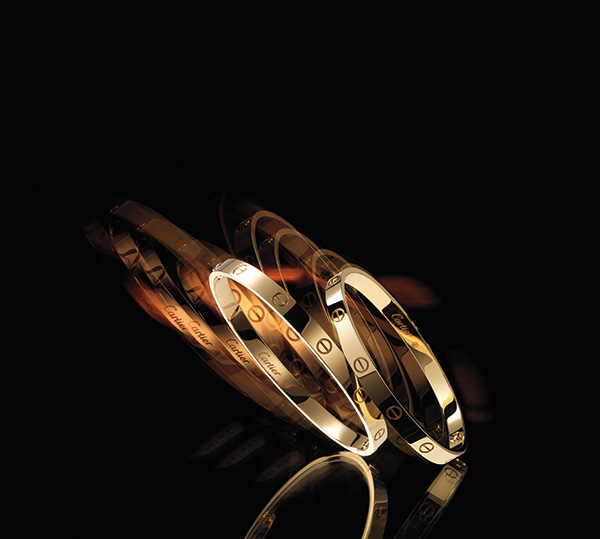
This image involves two shots. “In one shot I lit the rings with diffusion and fill cards, with just one light. Then, by moving or removing various fill cards, I was able to change the lighting a little bit for the second shot. I programmed the Broncolor pack to fire off several flashes within a certain amount of time, at specified intervals, and added a delay to give me time to move the front and rear standards the proper distance.”
Stroboscopic Technique
One of his trademark techniques is what Savitch describes as “stroboscopic,” except that it’s not stroboscopic in the traditional sense. “When I first started this technique, which involved a long exposure and firing my Broncolor flash at different rates on different parts of the object at different times, it was with regular household items, not necessarily geared toward commercial shoots. My aim was just to create a stunning image that was about light and shape and form in some abstract manner. The technique caught the eye of my French clients, who immediately envisioned how to integrate it into a promotional campaign.”
The stroboscopic procedure involves intricate preparation. “My team has built rigs starting with the set on a table with wheels, or sometimes that may go on top of a lazy Susan. Other times, I’ll just use my technical camera and swing the front and rear standards during the exposure, which lets me keep the subject stationary, especially in situations where the subject on set is delicately balanced and can’t be moved. This entire exposure takes only one second.”
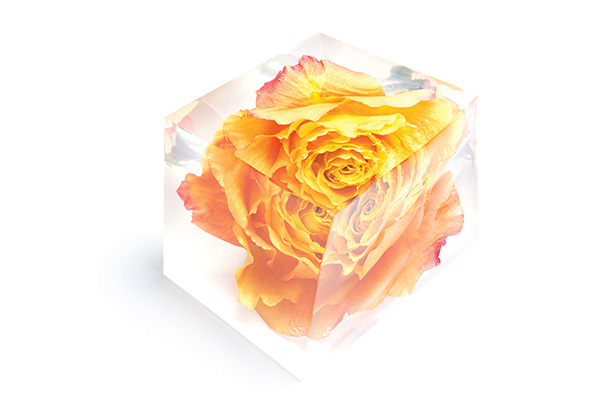
“Prop maker Aran Tharp worked for a week to develop a formula that would be clear and strong enough to form a gelatin cube, three or four inches per side, that could be reshaped on demand, with a flower inside, without destroying the integrity of the cube or flower.” The way Savitch reshaped the cube was to press down on it and twist using a sheet of clear glass that sits on the top surface (the glass being invisible in the shot). One heavily diffused strobe head from above and a little bit to the right, plus a fill card on the left, illuminated the cube, which sat on a white Plexi base.
Getting In Sync
Savitch also likes to work with pours, splashes, and explosions, where timing is everything. How does he time when to release the shutter? “That’s a good question,” he responded. “My prop maker, Brian Byrne Productions (www.setinice.com), has tested numerous timing mechanisms and custom-designed systems employing various types of pumps, motors, and pneumatic devices that we’ll use. We’ll trigger the lights by motion, vibration, or infrared—each depending on the situation.” The remote high-speed triggering systems come from the Kapture Group (www.kapturegroup.com).
He explained the process: “I should clarify that the remote trigger fires the flash, not the camera. We’ll work in the dark and I’ll open the shutter. Then we may, for instance, fire a BB gun at a bottle, and that noise will set off the flash by way of the triggering mechanism.
“In addition, we’ll loosen up a bit and do things by eye, manually. And surprisingly enough, sometimes that’s when we get the best results. But to answer your question, we usually use a combination of approaches: remote triggering to maintain a certain amount of consistency and then visually by eye, once we have the shot down, to get some variation. We composite the final image from the best elements (water spray, for instance) taken from the various exposures.”
Flash Freezing
To capture those stop-action shots, Savitch employs Broncolor Grafit A4 power packs, with Pulso focusable heads, usually with the standard P70 reflector. He points out: “When you have to freeze action, it’s the speed of the flash, not the shutter speed, that dictates how frozen that image appears.” And that’s precisely where these packs enter the picture. Various grip equipment (magic arms, Avenger stands, articulated arms) also comes into play. “Sometimes some armature wire, hot glue, and a Plexiglas block are all I need—you can do a lot with that.”
Savitch shoots with a Hasselblad and Leaf Aptus-II 12R 80MB digital back tethered to a Mac, stopping down to what he’d determined is the sweet spot for his lenses: f/16 at 1/3, shooting at ISO 50.
He doesn’t use HDR, explaining, “In the studio, you light to achieve that full tonal range. So I control my contrast and fill on set. What I do use as an additional utility is Helicon Focus focus-stacking software (www.heliconsoft.com).” For Raw processing, Savitch turns to Phase One’s Capture One, in which he’ll run LCC profiles for his lenses. For color balance, he uses a gray card and Macbeth ColorChecker Passport, both on set. His gear is largely the same in New York and Paris.
His Favorite Lighting Tool
“My Bron Pulso heads have throughout my career proven to be the most universal tool I own,” Savitch says. “The focusing knob allows me to modify the intensity and contrast of my light. And then diffusion does the rest. That and a fill card or mirror. Most of my scenarios can be achieved with only one or two lights.”

What’s In Savitch’s Gear Box
› Leaf Aptus-II 12R
› Sinar 120mm Macro retrofitted with Copal shutter
› Broncolor Grafit A4 power pack
› Broncolor Pulso focusing head with P70 reflector
› Roscolux diffusion
› Sinar P2 with sliding back

To see more of Adam Savitch’s work, visit www.adamsavitch.com.

